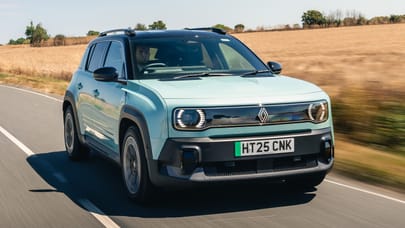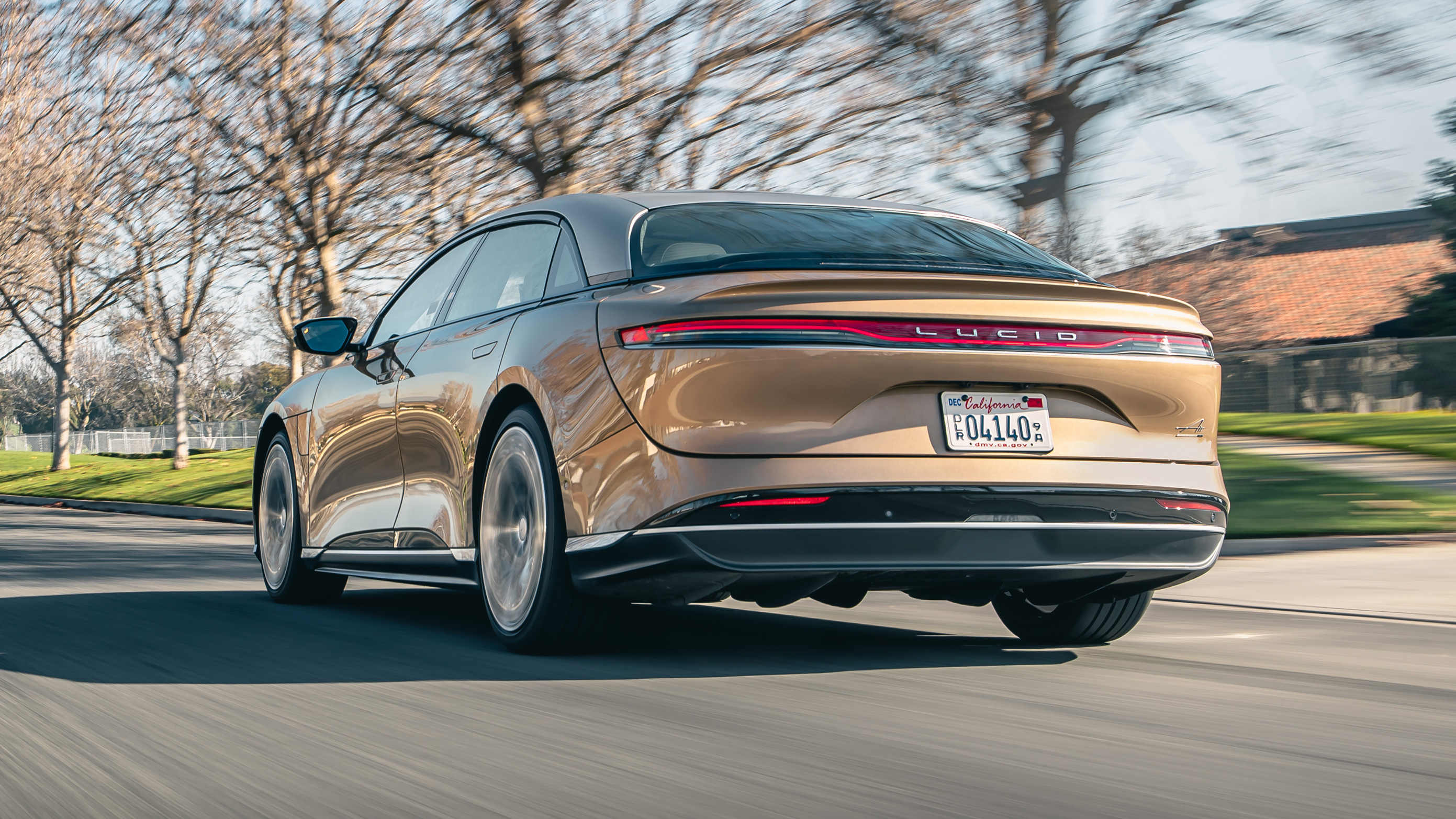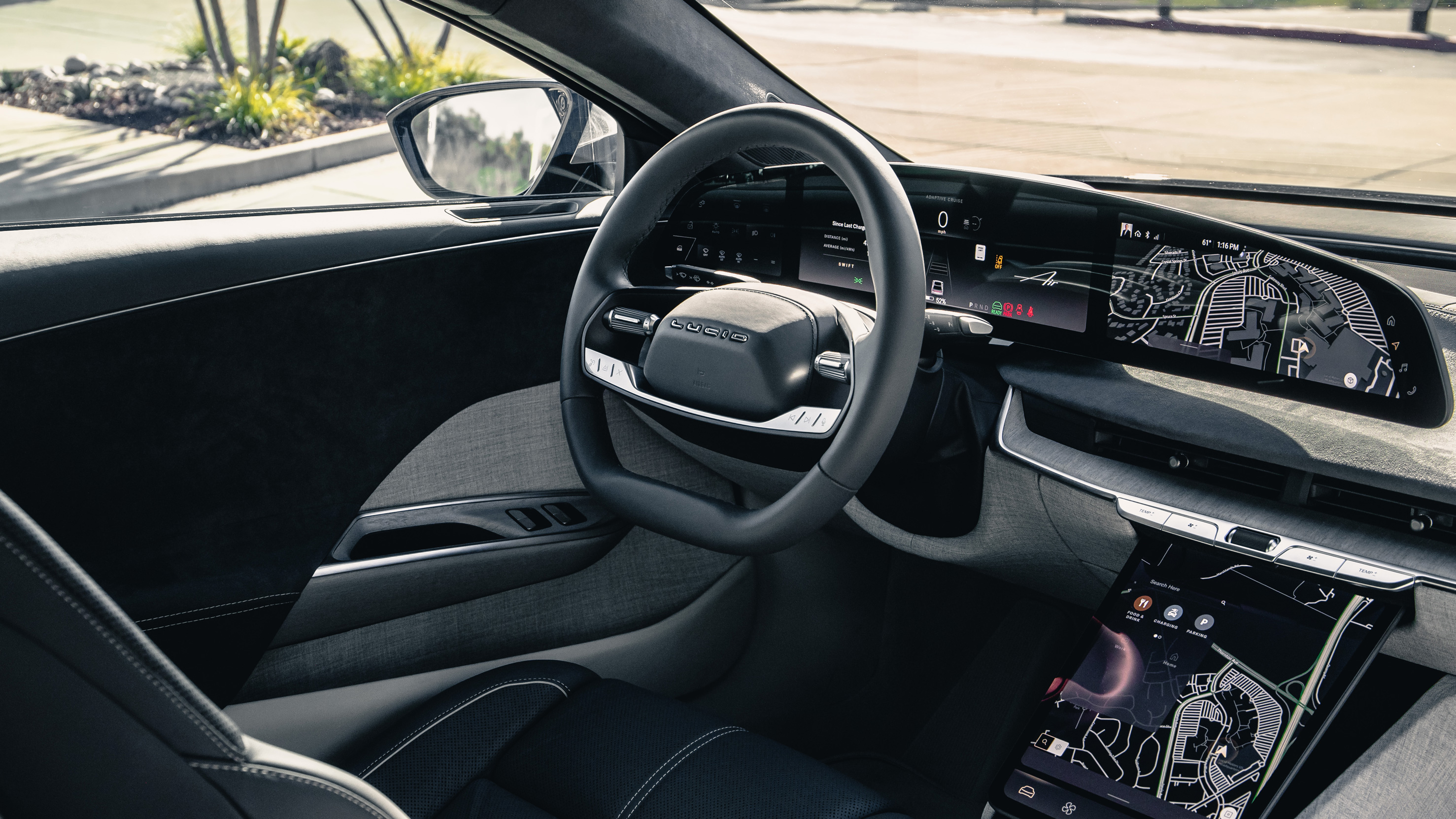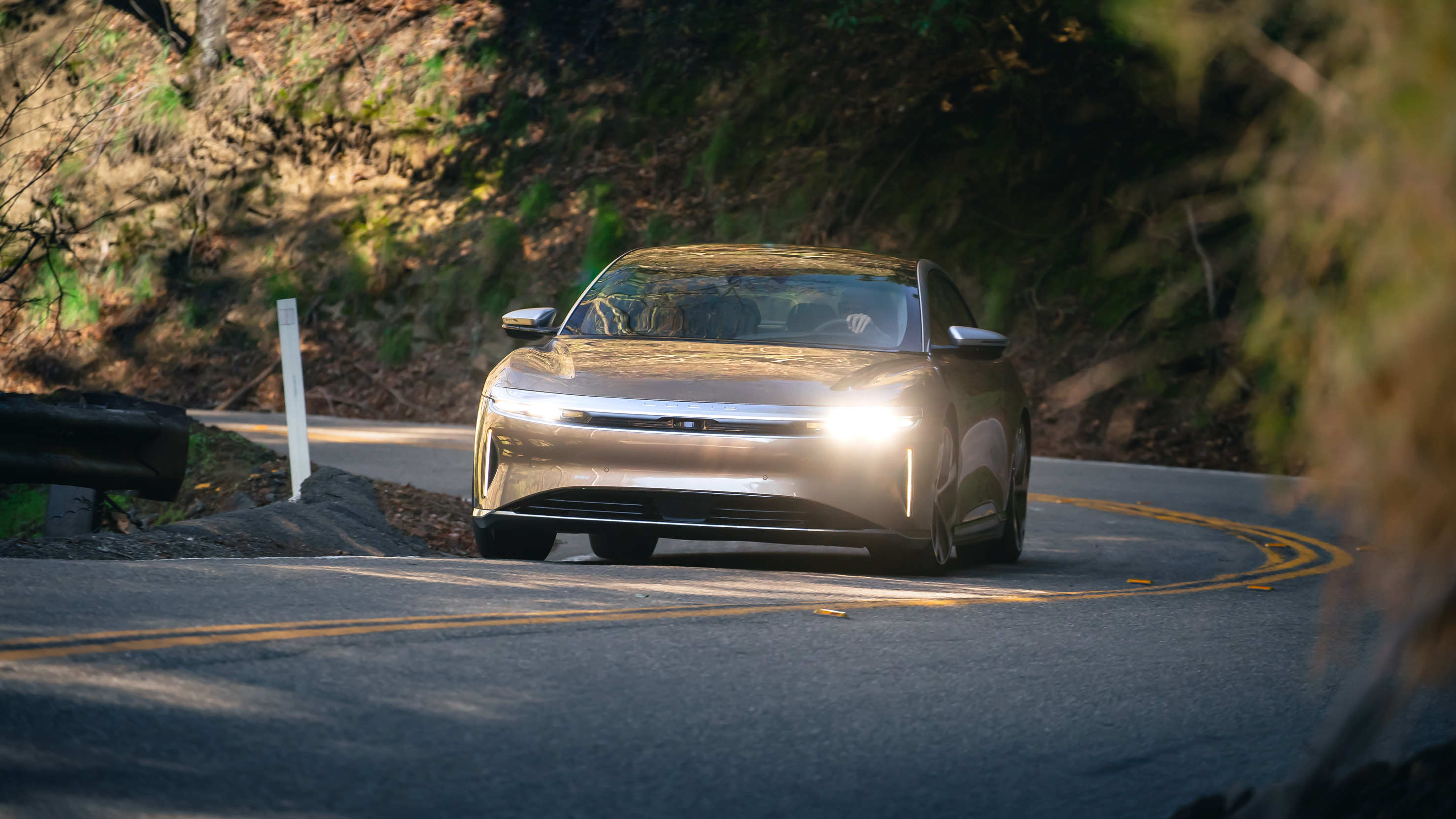
Lucid Air review
Interior
What is it like on the inside?
As you would expect, the inside of the Lucid Air is very voluminous and comfortable, well-appointed with premium materials and options to slather it in even more premium-ness like real Santa Cruz leather. Ripped straight out of the Santa Cruz mines, we recklessly assume.
The interior’s big draw for us – besides its natty door release triggers and vigorous massage functions – is its sense of quiet. The Air may be uncommonly good to drive for something so portly, but that original target of whipping the S-Class into shape ensures the overriding feeling is one of calm. The Air is unfailingly whisper-quiet, even at a keen motorway cruise.
The 34in glass cockpit display is the centrepieces inside; a floating screen which incorporates the driver info and the infotainment screens, along with some ancillary controls. This is paired with a center console display that’s home to the majority of car functions – drive modes, brake regen strength, and so on.
We have to say ‘so on’ here, not out of laziness, but because this particular screen houses too many functions to name. This is the crux of the Lucid’s faults: while the Air is not without physical inputs, they are few and far between. And what remains takes some getting used to.
All other functions are housed in several menus that demand the driver pay attention to. And we’re talking full-on, head-looking-down focus. Not good.
Surely these are things you do once, right?
You’d think so. Even with a saved settings profile, we found ourselves far too often fiddling with the screen to set or reset some parameter we’d adjusted the day before, from fine-tuning controls to drive characteristics. There’s simply so much the Lucid forces you to mess with: it’s one of the most distracting interfaces we’ve seen outside of a Mercedes dealership.
That was quite a rant.
Think of it as a public service announcement. Quickly, here are some other features of note: DreamDrive, it’s Lucid’s suite of drive assists that includes 360-degree camera cross traffic alert, automatic emergency braking and so on (there’s that phrase again).
DreamDrive Pro ups the feature pack with future-proofed ADAS hardware that can be updated when proper hands-free programming can be implemented. It also includes more sensors and cameras, facilitating better traffic jam assist and speed control through bends when cruising.
What’s it like in the back?
The rear quarters are generous in size, but although rear legroom sits somewhere between a Tesla Model S and Mercedes S-Class, taller folk might struggle tucking their feet beneath the front seats. Luggage space is strong, split between 458 litres in the rear (with the whole rear clam revealing it rather elegantly) and 280 litres up front. The latter is almost twice what you’ll find under the bonnet of a Porsche Cayman, though the space is much flatter and shallower here. Big stuff’s going in the back.
Featured

Trending this week
- Car Review
BMW iX3






